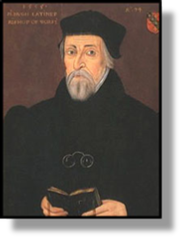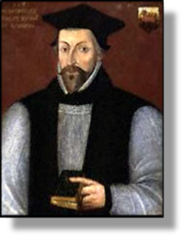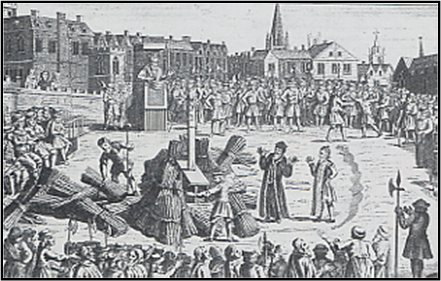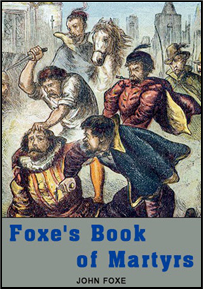


xxxxxThe prelate Nicholas Ridley assisted Thomas Cranmer in compiling the Book of Common Prayer and the Articles of the Protestant faith. In 1553, as the Bishop of London, he declared both Mary and Elizabeth illegitimate, and supported Lady Jane Grey. He was imprisoned by Mary when she came to the throne, but refused to recant his Protestant faith. Hugh Latimer was also an avowed Protestant. He had supported Henry VIII's divorce from Catherine of Aragon, and was a loyal supporter of Edward VI. When Mary became Queen he was also imprisoned and then, together with Ridley, was burnt at the stake in 1555. As we shall see, the following year Cranmer also met the same fate. These deaths added greatly to the unpopularity of "Bloody Mary".
NICHOLAS RIDLEY c1500 -
HUGH LATIMER 1485 -

 xxxxxThe Protestant prelate Nicholas Ridley (illustrated on right) served as chaplain to both Thomas Cranmer and Henry VIII. In 1547 he was appointed bishop of Rochester and, during the reign of Edward VI, assisted Cranmer in compiling the Book of Common Prayer and the Forty-
xxxxxThe Protestant prelate Nicholas Ridley (illustrated on right) served as chaplain to both Thomas Cranmer and Henry VIII. In 1547 he was appointed bishop of Rochester and, during the reign of Edward VI, assisted Cranmer in compiling the Book of Common Prayer and the Forty-
xxxxxAlongside him and suffering the same sentence of death was Hugh Latimer (illustrated above on left). A Protestant from his days at Cambridge University, he actively supported Henry VIII in his attempts to obtain a divorce from Catherine of Aragon. He was appointed bishop of Worcester in 1535, but resigned from this office in protest against Henry's Six Articles. He was restored to royal favour with the accession of Edward VI, but he was accused of heres y once Mary Tudor became Queen and, after imprisonment in the Tower of London, was burned at the stake. We are told that his last words were: ”We shall this day light such a candle … in England as shall never be put out”.
y once Mary Tudor became Queen and, after imprisonment in the Tower of London, was burned at the stake. We are told that his last words were: ”We shall this day light such a candle … in England as shall never be put out”.
xxxxxAs we shall see, the following year the former Archbishop of Canterbury, Thomas Cranmer -
xxxxxIncidentally, the print above is from the Book of Martyrs, written by John Foxe (1517-
xxxxx…… The Book of Martyrs has the dubious distinction of being the longest- eads:
eads:
xxxxxThe Actes and Monuments of these latter and perilous Dayes, touching matters of the Church, wherein are comprehended and described the great Persecution and horrible Troubles that have been wrought and practised by the Romishe Prelates, Epeciallye in this Realme of England and Scotland, from the yeare of our Lorde a thousande to the time now present. Gathered and collected according to tile true Copies and Wrytinges certificatorie as well of the Parties themselves that Suffered, as also out of die Bishop’s Registers, which were the Doers thereof, by John Foxe, commonly known as the “Book of Martyrs”.
Acknowledgements
Ridley: 1555, artist unknown – National Portrait Gallery, London. Latimer: 1555, artist unknown – National Portrait Gallery, London. Execution: artist unknown – illustration in Foxe’s Acts and Monuments of these latter and perillous days, 1563.
M1-


